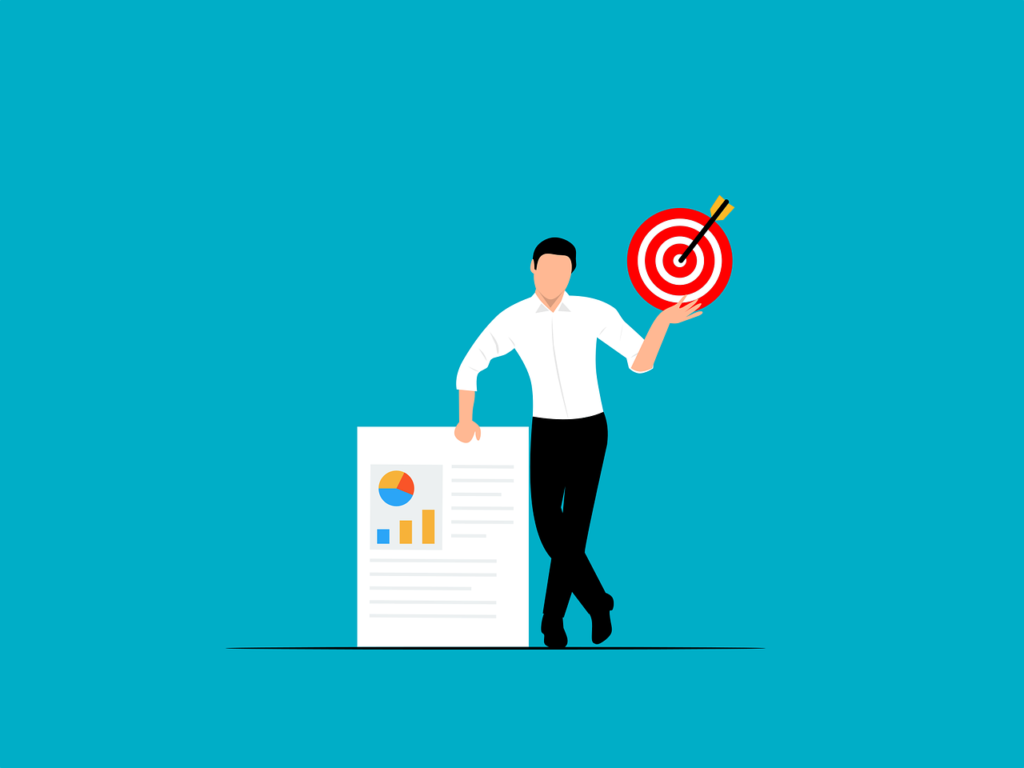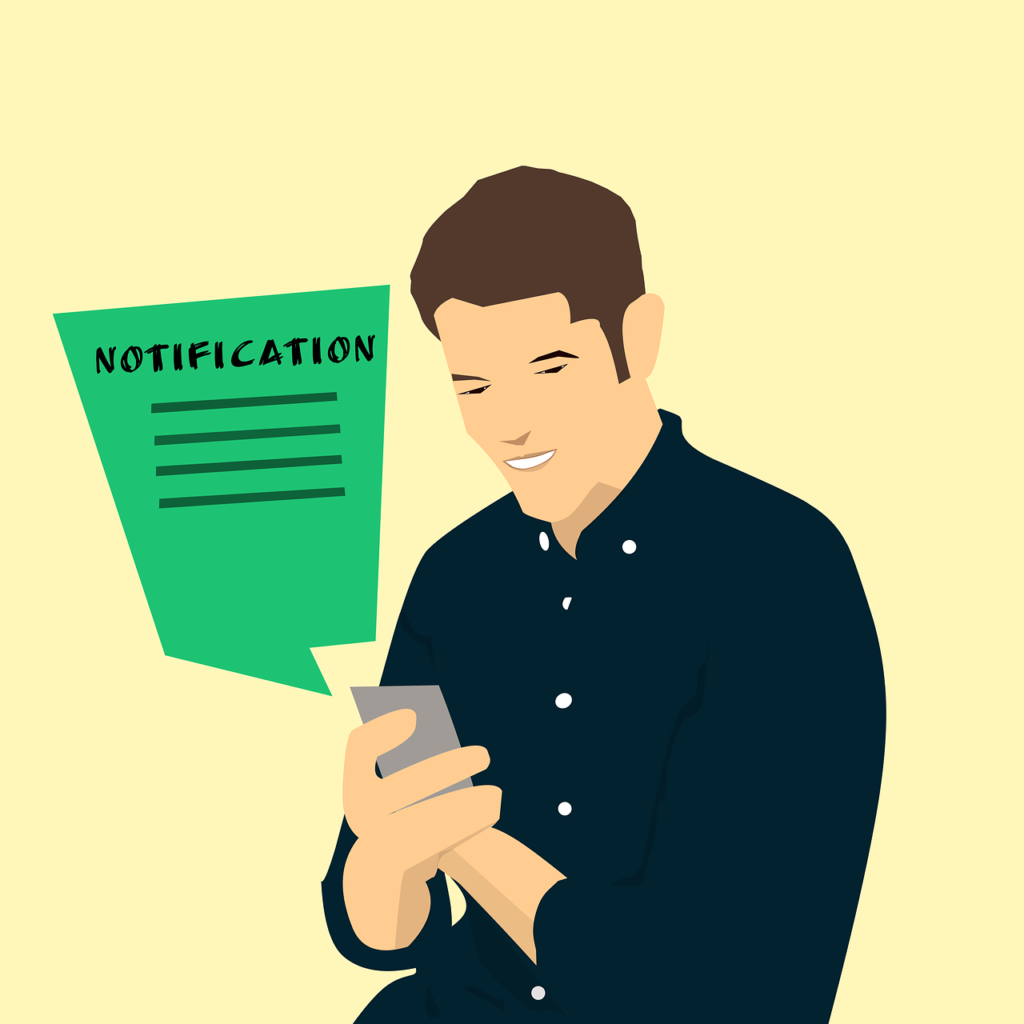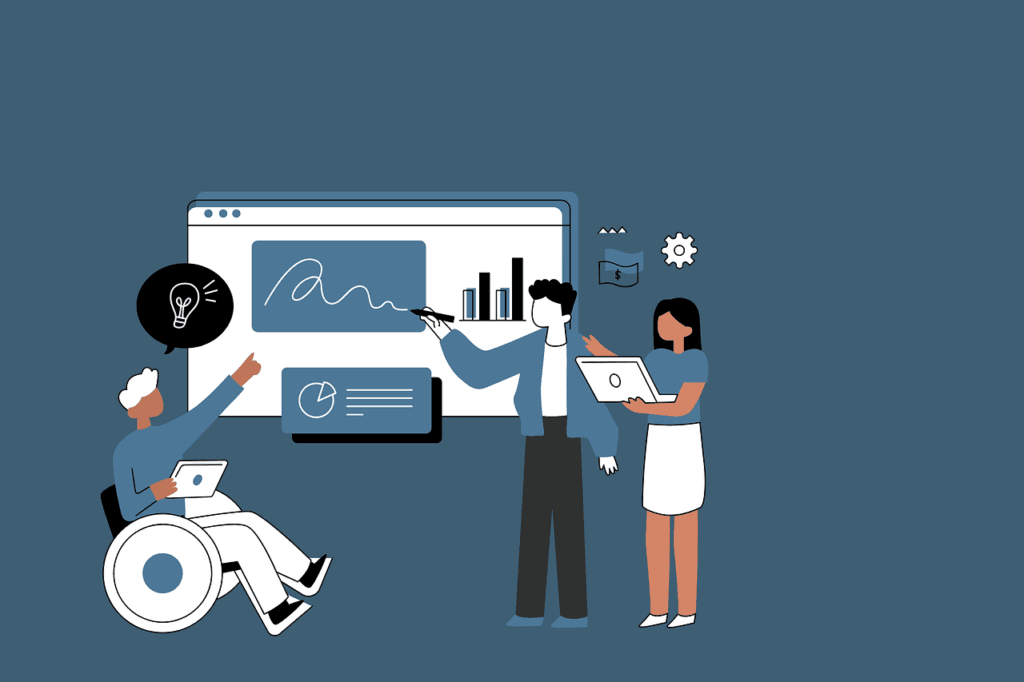Have you ever wondered why so many people visit your website, look at your products or services, and then leave without taking any action? The truth is, not every visitor is ready to commit right away. This doesn’t mean they’re not interested; it just means they need a nudge to return and make a decision. That’s where retargeting comes in.
Retargeting is the art of reconnecting with these prospects by delivering personalized messages that remind them of what they were interested in. When done right, it can turn lost opportunities into conversions—all while keeping costs low compared to traditional acquisition methods. Let’s explore how you can implement powerful retargeting tactics to re-engage prospects effectively and cost-efficiently.
Understanding the Power of Retargeting
Why Retargeting Works
The buying journey isn’t always linear. Prospects often explore multiple options before making a decision. Retargeting bridges the gap between interest and conversion by keeping your brand top-of-mind. It works because it’s targeted at people who already know you and have shown some level of interest in your offerings.
For example, a visitor who browses your product pages is more likely to convert with a little encouragement than someone who has never interacted with your brand. Retargeting lets you focus your efforts on these warm leads, ensuring your budget is spent on high-potential prospects.
Lower Costs, Higher Returns
One of the biggest advantages of retargeting is its efficiency. Unlike broad advertising campaigns that target cold audiences, retargeting focuses on those who are already familiar with your brand. This precision reduces wasted spend, driving better results at a fraction of the cost.
For instance, instead of spending heavily to reach a new audience, you can use retargeting ads to gently guide existing prospects back to your website. Because these audiences are more likely to convert, your cost-per-acquisition (CPA) is significantly lower.
Step 1: Segment Your Audience for Maximum Impact
Identify High-Value Segments
Not all website visitors are the same. Some are just browsing, while others are seriously considering a purchase. To get the most out of retargeting, segment your audience based on their behavior and engagement levels.
For example, segment users who abandoned their cart separately from those who only visited your homepage. Cart abandoners are closer to converting and may need a different type of message, such as a reminder or discount, compared to casual browsers who need more education about your offerings.
Tailor Messages to Each Segment
Once you’ve segmented your audience, craft personalized messages that address their specific needs. For instance, for someone who abandoned their cart, your ad could say, “Still thinking about your new running shoes? Get free shipping if you complete your purchase today!”
On the other hand, for a visitor who read a blog post but didn’t explore further, you might show an ad like, “Ready to take the next step? Check out our top-rated products now!”
Tailored messaging ensures relevance, which boosts engagement and conversion rates.
Step 2: Use Dynamic Retargeting for Personalized Ads

Show Users What They Care About
Dynamic retargeting takes personalization to the next level by displaying ads that feature the exact products or services a prospect interacted with. For example, if someone viewed a specific laptop on your site, your ad could showcase that laptop along with similar models or accessories.
This level of personalization grabs attention because it reminds users of their specific interest. Dynamic ads make the experience feel tailored and relevant, increasing the likelihood of a click.
Incorporate Recommendations
You can also use dynamic retargeting to upsell or cross-sell related items. For instance, if a customer adds a camera to their cart but doesn’t complete the purchase, show them an ad featuring the camera along with accessories like lenses or tripods. This not only re-engages them but also increases the potential value of their purchase.
Dynamic ads are particularly effective because they eliminate guesswork, showing users exactly what they were interested in, making the ad feel more like a helpful reminder than a generic promotion.
Step 3: Experiment with Creative Formats and Platforms
Diversify Your Ad Placements
Retargeting isn’t limited to just one platform. You can reach your audience across multiple channels, including Google Display Network, Facebook, Instagram, and even LinkedIn for B2B campaigns. The key is to be where your audience spends their time.
For example, a prospect might visit your website on their desktop but spend hours scrolling through Instagram later. Showing them an Instagram retargeting ad ensures your message reaches them in a familiar environment.
By diversifying your placements, you increase the chances of re-engagement while keeping costs low by targeting platforms where ad competition might be less intense.
Test Visual and Interactive Ads
Retargeting doesn’t have to be boring. Use eye-catching visuals, videos, or interactive elements to engage your audience. For example, instead of a static image, try using a carousel ad on Facebook to showcase multiple products.
Interactive ads, such as those that allow users to swipe, tap, or explore, encourage engagement and make your brand more memorable. For instance, a travel company could use a carousel ad to highlight different destinations, each linking to specific offers.
Creative formats not only attract attention but also make your retargeting efforts stand out in crowded spaces.
Step 4: Offer Incentives Without Cheapening Your Brand

Use Discounts Strategically
Offering discounts can be a powerful way to re-engage prospects, but overusing them can hurt your brand value. Instead of slashing prices across the board, offer incentives that feel exclusive and time-sensitive.
For instance, “Complete your purchase within 24 hours to unlock a 10% discount” creates urgency and motivates action. Pair the discount with strong messaging, emphasizing value rather than price alone, to maintain your brand’s perceived quality.
Provide Non-Monetary Incentives
Not all incentives have to involve discounts. Consider offering free shipping, extended trials, or exclusive content to entice prospects. For example, a software company could retarget users with an ad offering “Free onboarding for all sign-ups this week.”
Non-monetary incentives add value without eroding your margins, making them an excellent choice for brands that want to maintain premium positioning.
Step 5: Leverage Email Retargeting for Cost-Effective Re-Engagement
Combine Email with Retargeting Ads
If you’ve collected email addresses from your prospects, you can combine email marketing with retargeting ads for a powerful one-two punch. For example, after sending an abandoned cart email, follow up with a retargeting ad on social media to reinforce your message.
This multi-channel approach ensures your message stays top-of-mind, increasing the likelihood of conversion. It also creates a seamless experience, as prospects see consistent messaging across different touchpoints.
Use Behavioral Triggers
Email retargeting works best when it’s triggered by specific user actions. For instance, if a prospect downloads a whitepaper from your site but doesn’t schedule a demo, send them an email highlighting the benefits of your product, followed by a retargeting ad encouraging them to book a call.
Behaviorally triggered emails feel timely and relevant, making them more effective than generic blasts. They also complement your retargeting ads, creating a cohesive re-engagement strategy.
Step 6: Analyze, Optimize, and Scale
Monitor Key Metrics
The success of your retargeting efforts hinges on tracking and analyzing the right metrics. Focus on metrics like click-through rate (CTR), cost-per-click (CPC), and conversion rate to gauge performance. For example, if your CTR is high but conversions are low, it might indicate a disconnect between your ad and landing page.
Regularly reviewing these metrics helps you identify what’s working and what needs improvement, ensuring your campaigns remain cost-effective.
Test and Refine Campaigns
Retargeting isn’t a set-it-and-forget-it tactic. Continuously test different ad creatives, messaging, and offers to see what resonates most with your audience. For example, compare the performance of ads that highlight discounts versus those that emphasize benefits.
Testing allows you to fine-tune your approach, ensuring every dollar spent delivers maximum impact. As you learn what works, scale up your efforts to drive even greater returns,.

Related: Check out our free tools:

Step 7: Leverage Retargeting for Long-Term Relationship Building
Build Brand Loyalty Through Retargeting
Retargeting isn’t just for first-time conversions; it’s also a powerful tool for nurturing long-term relationships with your existing customers. By targeting past buyers with personalized messages, you can encourage repeat purchases, cross-sell complementary products, and build brand loyalty.
For instance, a clothing brand can retarget customers who purchased winter coats with ads showcasing scarves or gloves. This approach not only increases the customer’s lifetime value but also keeps your brand top-of-mind for future purchases.
Additionally, consider using retargeting to celebrate customer milestones. For example, send ads offering discounts or exclusive content on the anniversary of their first purchase. These thoughtful gestures create emotional connections, fostering deeper loyalty.
Educate and Upsell Existing Customers
Another way to use retargeting for long-term engagement is through educational content. Show ads that highlight how to get the most out of your product or service, such as tutorials, FAQs, or tips for advanced features.
For example, a SaaS company might target users who signed up for a basic plan with ads explaining the benefits of upgrading to a premium tier. These ads subtly encourage upselling while providing value, ensuring customers see your brand as a helpful partner rather than a pushy salesperson.
Educational retargeting ads can also reduce churn, as they help users understand and fully utilize your offerings, making them more likely to stick around.
Step 8: Use Sequential Retargeting to Guide the Customer Journey

Craft a Step-by-Step Ad Sequence
Sequential retargeting involves showing ads in a logical order, guiding prospects through the customer journey. Instead of bombarding users with the same message repeatedly, create a series of ads that address different stages of their decision-making process.
For example:
- Start with an ad that reminds them of the product they viewed.
- Follow up with a testimonial or case study ad that builds trust.
- Conclude with a promotional offer or a limited-time discount to drive action.
This approach keeps your ads fresh and engaging while addressing the concerns or doubts prospects might have at each stage. It also prevents ad fatigue, as users see varied and relevant content.
Adjust Sequencing Based on Engagement
Use data to adapt your ad sequence based on user behavior. For example, if a prospect clicks on your initial reminder ad but doesn’t convert, move them to the next stage with a trust-building ad. On the other hand, if they ignore the first two ads, experiment with a stronger incentive or an entirely different angle.
Dynamic sequencing ensures your retargeting efforts remain flexible and responsive, improving the chances of re-engagement.
Step 9: Balance Frequency to Avoid Overexposure
Set Caps to Prevent Ad Fatigue
Retargeting is effective, but there’s a fine line between being helpful and being intrusive. Bombarding prospects with the same ad multiple times can lead to ad fatigue, where users start ignoring or even resenting your brand.
Most ad platforms, like Google and Facebook, allow you to set frequency caps, limiting how many times an individual sees your ad within a specific timeframe. For example, showing an ad three times per week might be enough to stay on their radar without becoming overwhelming.
Adjust these caps based on your audience and campaign goals. Prospects further along the funnel might require more frequent nudges, while top-of-funnel audiences benefit from a lighter touch.
Refresh Creatives Regularly
If you’re running a long-term retargeting campaign, refresh your ad creatives every few weeks to keep them engaging. Swap out images, update messaging, or experiment with new formats like video or carousel ads.
For example, a fitness brand running retargeting ads for a membership plan might start with an ad showcasing the gym’s facilities, then switch to one featuring testimonials from happy members. This variety keeps the campaign interesting and increases its effectiveness.
Step 10: Retarget Beyond the Sale
Encourage Post-Purchase Engagement
Retargeting doesn’t stop once a customer makes a purchase. Use it to encourage post-purchase actions, such as leaving reviews, sharing feedback, or referring friends. For instance, a customer who recently bought a product might see an ad saying, “Love your new purchase? Leave a review and get 10% off your next order!”
Post-purchase retargeting helps build social proof, strengthens customer relationships, and increases the likelihood of repeat business. It also ensures that customers feel valued and appreciated after the transaction.
Promote Loyalty Programs and Exclusive Offers
If you have a loyalty program, retargeting can be a powerful way to drive sign-ups and engagement. Show ads highlighting the benefits of joining, such as earning points, accessing exclusive deals, or getting early access to new products.
For example, a coffee shop chain might retarget customers with an ad saying, “Earn free coffee faster! Join our rewards program today.” These ads remind customers of the perks they’re missing out on, encouraging them to take the next step.
Retargeting can also be used to re-engage inactive loyalty members. Show ads featuring personalized offers based on their past purchases, such as “It’s been a while—get 20% off your favorite latte today!”
Step 11: Measure Success and Optimize

Focus on the Right Metrics
To ensure your retargeting campaigns deliver results, track key performance indicators (KPIs) that align with your goals. Metrics like click-through rate (CTR), conversion rate, and return on ad spend (ROAS) provide insights into how well your ads are performing.
For example, if your goal is to drive conversions, focus on conversion rates and cost-per-acquisition (CPA). If engagement is the goal, CTR and impressions might be more relevant.
Regularly review these metrics to identify what’s working and where improvements are needed.
A/B Test Campaign Elements
Optimization is an ongoing process. Use A/B testing to compare different ad elements, such as headlines, visuals, or CTAs, to see which performs better. For instance, test whether a “Shop Now” button outperforms a “Learn More” button in driving clicks.
A/B testing helps you make data-driven decisions, refining your campaigns for maximum impact and cost efficiency.
Step 12: Retarget Across the Entire Marketing Funnel
Top-of-Funnel Retargeting for Awareness
Retargeting isn’t limited to prospects near the point of conversion. It can also be a valuable tool for nurturing top-of-funnel audiences. These are users who may have visited your website, clicked on an ad, or engaged with a social media post but aren’t yet familiar enough with your brand to make a decision.
For example, show these users ads that highlight your brand story, unique value proposition, or educational content. If someone reads a blog post about “Tips for Home Organization,” you could retarget them with an ad promoting your product, such as “Simplify Your Space with Our Best-Selling Organizers.”
Top-of-funnel retargeting helps build trust and familiarity, laying the groundwork for future conversions.
Mid-Funnel Retargeting to Nurture Leads
Once a prospect has interacted with your brand multiple times, they may be considering their options but need more information to make a decision. Retargeting can help nurture these leads by addressing their specific concerns or objections.
For instance, if someone has spent time on your FAQ page or pricing page, retarget them with testimonials, case studies, or comparison ads. These ads can provide the social proof or detailed information they need to feel confident about choosing your brand.
By nurturing mid-funnel leads, you keep them engaged and guide them closer to the purchase stage.
Bottom-of-Funnel Retargeting for Conversions
Bottom-of-funnel retargeting focuses on driving action. These are prospects who are ready to convert but may need an extra push. Use ads that create urgency or offer final incentives, such as limited-time discounts, free trials, or free shipping.
For example, an e-commerce brand could retarget users who abandoned their cart with ads like, “Your cart is waiting! Complete your purchase within the next 24 hours and enjoy 15% off.” These ads tap into FOMO (fear of missing out), encouraging immediate action.
Bottom-of-funnel retargeting ensures you capture high-intent leads while maximizing the ROI of your efforts.
Conclusion: Turning Lost Opportunities into Conversions
Retargeting is one of the most cost-efficient ways to turn prospects into paying customers. By focusing on warm leads, crafting personalized messages, and experimenting with creative formats, you can drive meaningful results without overspending.
The key to success lies in segmentation, personalization, and continuous optimization. Start by identifying your audience’s behaviors, tailor your messaging to their needs, and refine your campaigns based on performance data. With these tactics in place, retargeting becomes more than just a marketing tool—it becomes a growth engine for your business.
Now’s the time to re-engage those prospects who slipped through the cracks. With the right retargeting strategy, you can turn their hesitation into action and grow your business, all while keeping costs in check.
READ NEXT:
- Are Vanity Metrics Killing Your Marketing Efficiency? Here’s What to Track Instead
- Pinpointing Digital Marketing ROI: Why Your Metrics Aren’t Telling the Full Story
- Unlocking Real ROI in Digital Marketing: The Hidden Costs Draining Your Budget
- How Misaligned Marketing Funnels Are Blocking Your ROI Potential
- Best Digital Marketing Agency In Santa Ana, California
- Best Digital Marketing Agency In San Francisco, California





















